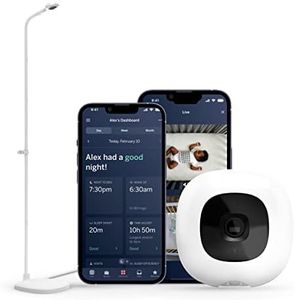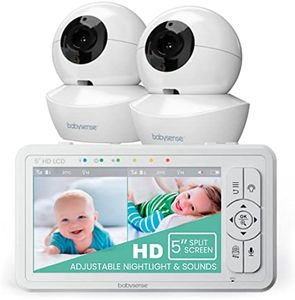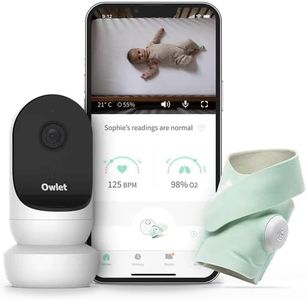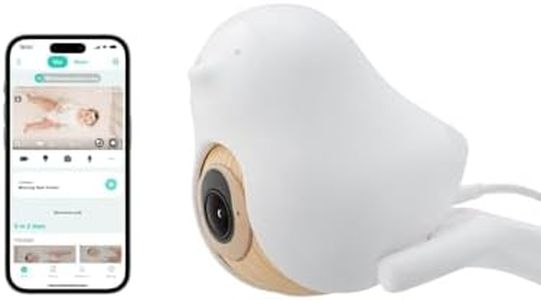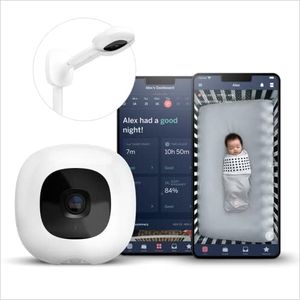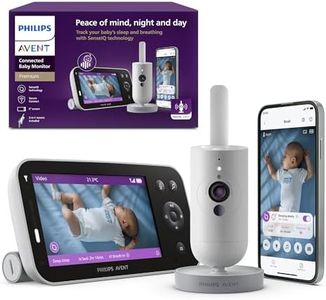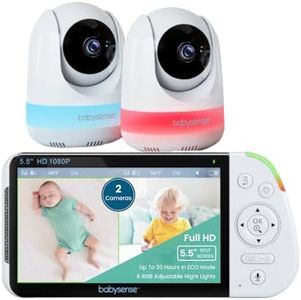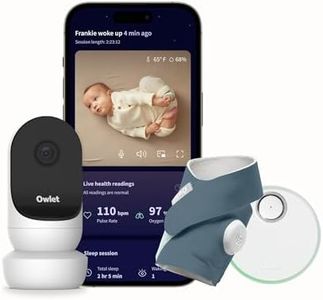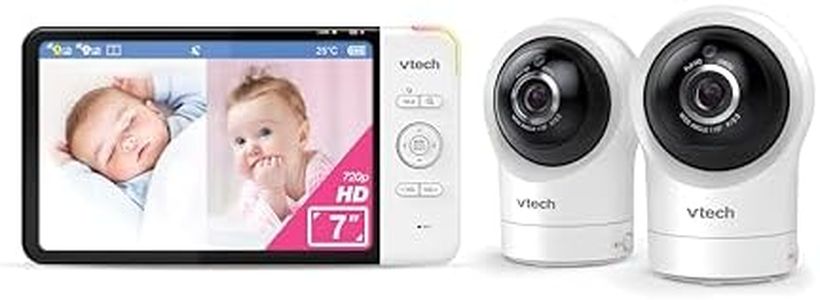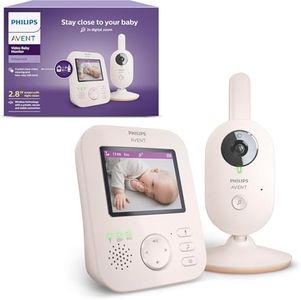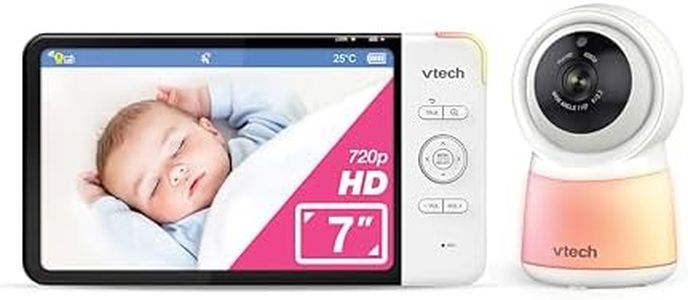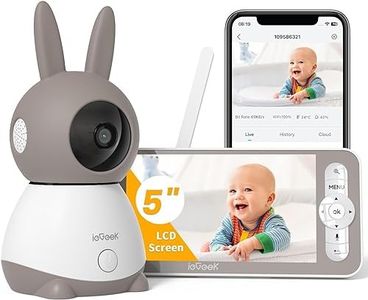We Use CookiesWe use cookies to enhance the security, performance,
functionality and for analytical and promotional activities. By continuing to browse this site you
are agreeing to our privacy policy
10 Best Audio Baby Monitor
From leading brands and best sellers available on the web.By clicking on a link to a third party's website, log data is shared with that third party.
Buying Guide for the Best Audio Baby Monitor
Choosing the right audio baby monitor can give you peace of mind while your baby sleeps, letting you hear if they need attention from another room. Since these devices focus on transmitting sound, it's important to understand which features matter most and how they align with your needs and living situation.RangeRange refers to how far apart the parent and baby units can be while still maintaining a clear audio connection. It's crucial because it determines where in your home and yard you can move while staying connected. Short ranges (up to 150 feet) work well in apartments or small homes, mid-range monitors (up to 600 feet) suit average-sized houses, and long-range models (up to 1,000 feet or more) are helpful if you have a large home, multi-story layout, or want coverage outdoors. Choose a range that fits your home size and typical movement patterns.
Sound QualitySound quality is about how clear and accurate the transmitted audio is. This matters because you'll want to confidently tell the difference between your baby’s cries and normal background noises. Basic monitors provide adequate sound, but models with digital technology usually produce clearer audio with less interference. If your home is noisy or has many wireless devices, digital sound monitors can help you avoid static and missed sounds.
Interference ProtectionInterference protection ensures that other devices using similar frequencies (like Wi-Fi routers or cordless phones) don’t distort or interrupt the monitor’s signal. Basic analog monitors are more prone to interference, while those with digital technology (look for DECT or FHSS) have better privacy and clarity. If you live in an apartment, condo, or have many wireless gadgets, interference protection is really important for reliable use.
Battery Life and Power OptionsBattery life tells you how long the parent unit operates before needing a recharge or new batteries. Some units also plug into a wall outlet for constant power. If you plan to carry the parent unit around, long battery life is essential to avoid frequent charging. If you’ll mostly keep it in one spot, a plug-in model might be fine. Consider your daily routine and whether portable or stationary use is more likely.
Two-way Talk (Talkback)Two-way talk allows you to speak to your baby through the monitor, which can soothe them without you immediately going to their room. This feature is helpful if your child gets fussy but calms down at your voice. If you want to comfort your baby from a distance or give simple instructions to older children, pick a model with this option. If you'll only be listening, a standard one-way audio monitor will suffice.
Sound Activation and SensitivitySound activation means the parent unit only alerts or transmits when noise is detected in the baby's room. Sensitivity determines how loud a sound needs to be before the monitor reacts. High sensitivity is great if you want to hear every little noise, while lower sensitivity prevents the monitor from waking you for every rustle. Choose adjustable sensitivity if you want control over what sounds reach you.
PortabilityPortability is about size, clip/strap options, and weight of the parent unit. If you plan to move around frequently, a compact and lightweight design with a belt clip or lanyard is useful. If you usually stay in one place, portability is less of a concern. Consider your lifestyle and how actively you’ll use the monitor throughout your home.
